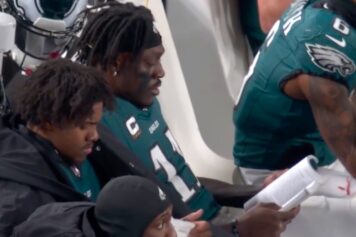A few weeks ago while attending the American Black Film Festival in New York City, I witnessed a short film Muted. Written by Brandi Ford, starring Chandra Wilson, Malcolm Jamal Warner, and directed by Rachel Goldberg, Muted was only 20 minutes in length but the offering sat upon my chest like a lump of steel for days afterwards.
In the film, a sweet, loving and creative young African American girl, Crystal Gladwell (Daniele Watts) leaves her home in the morning to go to school and is never seen alive again. Gleaned from the experiences of real African American families forced to endure such terrible circumstances, Muted was an accurate depiction of what black families searching for their lost children can expect. A side storyline included a white teenaged girl, abducted at the same time, who’s featured on the local evening news. Meanwhile, Crystal’s mother has to beg local journalists to cover the story, to no avail.
I say this often, but art does typically imitate real life. When a black child goes missing, the authorities seemingly lack in action and empathy as black parents beg for help in locating their missing child. Oftentimes, standard questions place blame on the missing. “Has the child run away before? Has the child gotten into a recent disagreement with their parents? Does the child use illegal drugs? Have you checked with the child’s friends?”
This hits the family with a triple whammy. First they have to convince law enforcement that their child is not the type of kid to run away. Then they have to convince the local media to air the child’s photo on the nightly news. And lastly, they oftentimes must lead the search for their loved one. While all of this is happening, they must fend off the eventual suspicions that they had something to do with the child’s disappearance themselves.
These may be standard or even habitual questions. But all the while, the clock is ticking. According to Parents.com, a child becomes missing or is abducted every 40 seconds in the United States. In 2001, 840,279 people were reported missing in the FBI’s National Crime Information Center. Of those reported missing, 85 to 90 percent were children. 20 percent of the children reported to the National Center for Missing and Exploited Children for non-familial abductions were not found alive.
With all that’s going on in the world, it’s a safe bet to say that the abduction of a family’s children is among its primary fears. But for black kids, in particular, it’s been a horrible year.
As the father of an autistic son, I was an emotional wreck when autistic 14-year-old Avonte Oquendo’s remains were found in the East River in January. In Avonte’s case, the 15-year-old boy slipped past a security guard and walked right out the door of his Queens, NY school in October 2013. Authorities had no leads or information on the case until three months later when his dismembered remains were found and identified via DNA. According to a March 2014 follow up report by the New York Times, school surveillance video shows the unlocked door that Avonte used to leave the building was purposefully left open by a still unidentified man.
But it's not the last time a Black or Hispanic child has gone missing. According to the non-profit Black & Missing Foundation, 14-year-old Alliyah Johnson of Calumet City, IL has been missing since June 27 of this year. She is listed by Black & Missing as being 5'3" tall and weighing 130 pounds, although a picture with her stats cannot be found anywhere online. Days later on July 1, 12-year-old Talaija Dorsey of St. James Parish, LA disappeared. Yet, there has been no national news coverage. Why?
Alliyah Johnson
In a nation where racism is a proven factor in almost every aspect of life, would it be naive of us to believe that racism plays no factor in how the authorities pursue cases of missing black children?
When it comes to Black and Hispanic children and national news coverage, missing, infants, small children and the disabled are given preference over teens. Yet, teenage girls are the most at risk group for abduction and exploitation. 74 percent of non-familial kidnappings involve girls.
According to a report by the U.S. Department of Justice released in September 2008 , blacks account for the largest overall percentage of human trafficking victims at 21 percent.

Talaija Dorsey
Ironically, last week the FBI pounded its chest in celebration when it announced the recovery of 168 child sex slaves, and the incarceration of 281 pimps, in a nationwide sting operation called Operation Cross Country. The FBI also claims to have freed around 3,600 children from similar circumstances since 2003. In 2005, the Polaris Project against human trafficking estimated that approximately 100,000 children a year are working in a sex trade in the United States. When we compare that number to the 168 children who have been freed recently and find that it represents less than a 17th of a percent of actual child sex slaves in this country, we are struck with a sobering realization that the FBI’s numbers are not to be celebrated but frowned upon. An investigation that lasted an entire year yet only 168 children have been freed? Pathetic.
But no matter the reason or cause of a Black child’s disappearance, they deserve all resources brought to the fore in search of them.
When the “Bring Back Our Girls” campaign was the popular hashtag opportunity of the week a few months back, I frowned upon it. While it was a positive overture of support, it gave Americans the false feeling of doing something without really doing anything. Now, that campaign has lost all of its steam in the United States. Yet the 276 Nigerian school girls it was meant to support are still missing and presumed in the hands of the Boko Haram. Perhaps if some of that same fervor was used in a sustained and controlled manner in the United States, more children, even Black and Hispanic ones, would be found safe and sound.
We as people of color cannot depend on anyone else to lift up our community, protect, or find our missing babies. We can fight this fact, or we can do what needs to be done like Avonte’s mother did when he went missing. For weeks, signs were plastered across subways, in stores, and on light poles in New York and New Jersey. An organized effort of search on the streets, media blitzes, and pressure on community leaders kept an ongoing organized effort on fire until Avonte's body was found.
We have to create our own community watch groups. And support organizations like the Black & Missing Foundation, Inc. with donations or by volunteering in some capacity. There are also tips at the website on how to keep your child safe during the summer months. In addition, parents can log on to www.missingkids.com/families for additional tips on safety and prevention as well as a hotline to call when you believe your child has been abducted.
The reality is that we have to take charge, band together, and do what needs to be done for the sake of our babies. The age old cliché of “It takes a community to raise a child” is true. But the fact that it takes a community to find a child, holds an even more potent truth.



